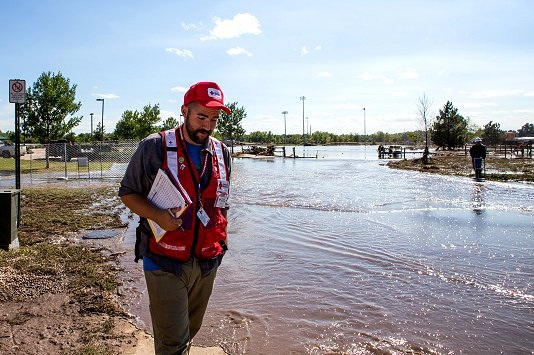
White House order on climate seeks to build resilience against weather extremes

An executive order from President Obama on climate impacts earlier this month requires federal agencies to work closely with states to build resilience against weather extremes such as floods and droughts.
The order, Preparing the United States for the Impacts of Climate Change, was issued on 1 November and comprises nine sections, one of which establishes a new inter-agency Council on Climate Preparedness and Resilience.
Climate impacts including “excessively high temperatures, more heavy downpours, an increase in wildfires, more severe droughts, permafrost thawing, ocean acidification, and sea-level rise…are already affecting communities, natural resources, ecosystems, economies, and public health” across the US, said President Obama.
Communities already facing economic or health-care challenges were often the ones most impacted by these risks, according to the executive order.
Managing them, it adds, required planning “by the Federal Government, as well as by stakeholders, to facilitate Federal, State, local, tribal, private-sector, and nonprofit-sector efforts to improve climate preparedness and resilience.”
‘Improved understanding’
The American Red Cross (ARC) said the order is consistent with its efforts to strengthen preparedness to deal with the impacts of climate change.
“The American Red Cross supports improved understanding of the effects of climate change and increased preparedness to deal with the growing number of disasters,” said Amy Mintz, ARC’s Senior Director of Emergency Management Coordination.
The ARC’s 2012 Global Impact Report argues that population growth, urbanization, environmental degradation and climate change worldwide have increased people’s vulnerability to disasters and made disaster preparedness “even more critical.”
The report noted that although earthquakes and hurricanes get most media attention, “more than 80 per cent of the 240 million people affected by disasters every year are impacted by floods, droughts and other climate-related disasters that rarely make big headlines.”
Because preparedness saves lives and resilient communities are better able to recover from crises, the American Red Cross continues to focus increased investments in reducing risks and readying communities before disaster strikes.
The ARC and the International Federation recently set up the Global Disaster Preparedness Center (GDPC) as a reference point for innovation and learning in disaster preparedness for the Red Cross Red Crescent worldwide.
Its website, preparecenter.org, provides an online space where practitioners can share experience and contribute content.
100 degrees Fahrenheit
Climate Centre Director, Dr Maarten van Aalst, welcomed the executive order’s focus on “managing climate risk through preparedness and resilience”.
He said: “The call for US agencies to promote strong partnerships and information sharing at all levels of government, risk-informed decision-making, and planning for preparedness very much chimes with Red Cross Red Crescent thinking.”
A White House infographic says 2012 was the second most extreme year on record in the US.
Droughts, wildfires and floods were all “more frequent and intense,” it says; 2012 was the warmest year on record in the US; 356 record temperatures were tied or broken; and a third of the population experienced 100-degree Fahrenheit temperatures for at least ten days.
The US also intended to take on “a leadership role in engaging the world’s major economies to advance key climate priorities and in galvanizing global action through international climate negotiations,” said the White House summary of climate issues.
American Red Cross worker William Bence assesses flood damage on Riverside Parkway in Evans, Colorado, after the catastrophic floods that began in September 2013 and led to emergencies being declared in 14 counties. At least 830 American Red Cross workers helped the people of Colorado, providing food, shelter, relief supplies and emotional support. (Photo: Hector Emanuel/American Red Cross)